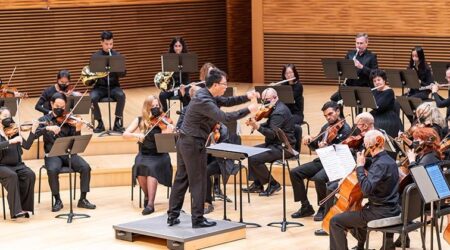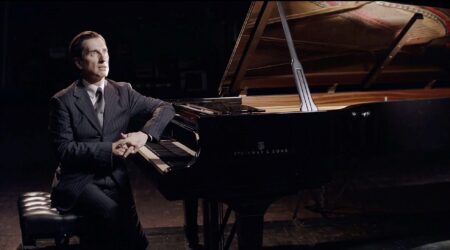Enjoying the Black Sea, Romanian-Style
Sometimes diction plays a larger role in the way we interact with our surroundings. When I told people that I would be traveling to Romania during the summer, I emphasized that the majority of that time would be spent in Constanta just relaxing on the beach. One individual’s response was, ‘’Oh, so you’re going to the […]
Sometimes diction plays a larger role in the way we interact with our surroundings. When I told people that I would be traveling to Romania during the summer, I emphasized that the majority of that time would be spent in Constanta just relaxing on the beach. One individual’s response was, ‘’Oh, so you’re going to the Black Sea?’’ Well I knew that that was where I was going, but I hadn’t thought about it in quite that way before. ‘’Lounging on the beach’’ versus ‘’lounging near the Black Sea,’’ suddenly I felt overwhelmed. The Black Sea seemed to demand more respect, caution, and ceremony than I was prepared to invest in a vacation.

The first day on the beach quickly put my worries to rest as people were respectful of the powerful body of water and the general atmosphere was nothing but friendly and laid back. As the days wore on, the sand became less visible as more tourists arrived. During the night, there was a slight change as everyone shifted from day beach-party mode to night beach-party mode.
The beach atmosphere was unlike any I had experienced before. People were occupied with themselves yet respectful and aware of others at the same time. People were not interested in wasting their precious vacation time judging other people’s bodies and activities, and trust me there were many intimidating bodies on display. Women were not shy about letting it all hang out either and what I found refreshing was that when a gorgeous woman resembling a Victoria’s Secret model walked by, people didn’t stare. Men didn’t gawk and whip their heads around and other women didn’t stare her down with death rays of envy. People were friendly, but not in the typical European sense where people are nice out of social obligation which often results in ridged and reserved interaction. The Romanians were friendly in the sense that they interacted with one another as if they were all old friends, participating in friendly jokes while walking or waiting in line. To accentuate the atmosphere even more, loudspeakers were set up every half mile blasting current popular dance music. Even people over seventy were swaying to the music.
Challenging the sea was not an option. During my time spent in Constanta, the waves were the largest and most powerful they had been in ten years. I felt that immediately as I waded into the water only to be knocked under the surface by a large wave that seemingly came out of nowhere. I caught on after the fourth time of being knocked under, that the way to interact with the sea was not to push against it, but rather allow it to push you. The shallow water near the shore was littered with thousands of people. The game was to stand in the water and wait for the next wave. When the wave was close enough, you had to jump with it. The result was that people were pivoted forward riding the wave. Sometimes these waves were relatively small, however there were waves so strong that people were being pulled under, dragged along the sea floor, and then tossed against someone else. If you didn’t walk out bleeding with a few bruises, you weren’t doing it right.
Despite the many lifeguards on duty along the shore blasting their whistles when people (only men, of course) attempted to swim too far out, seven people died the last two days that I was there. The sea was simply too agitated and people were not taking the proper safety precautions. The last day I spent on the beach, no one was allowed to go into the water.
I thought that with age my desire to go dancing would decrease, but it hasn’t in the least, so I was anxious to see this side of Romanian culture. The beach had several clubs, all of which were large, equipped with both male and female dancers, and extremely loud dance music. Starting as early as two in the afternoon, clubs began competing for guests. They did this by driving around in trucks adorned with the club’s name while two barely clothed women gyrated to the music blasting from portable speakers. Once in the club, the atmosphere was that of a concert. There were dancers everywhere, and a man and woman on stage talking into microphones every so often as if they were DJs. The music was made up of only remixed songs, unlike most clubs elsewhere. The crowd was always in sync: they knew when to scream, when to jump, and most importantly they knew how to dance (rhythm-inclined people can be hard to find in Europe).
Every so often I had the pleasure of experiencing a real part of Romanian culture. Like so many European countries, Romania has its traditional dances and music. In modern clubs, DJs remix the traditional music, and as soon as the crowd hears this they all rush to form circles. In the circle they hold hands and then move three steps to the right, kick up their left feet, and then move three steps to the left and kick up their right feet before starting the cycle over again. Even the waiters would set down their trays and join the nearest group.
The coming of evening brought with it more than just club-bound groups of friends, this was also the moment that the typical Gypsies came out. I’ll be honest, before I went to Romania I expected to see Gypsies in hoards. This is of course based on my experience with Gypsies while living in Paris for over four years. Paris has plenty, from old toothless ladies sitting in the middle of the sidewalks on the Champs Elysees begging for money to young bands of Romanian children trained to pickpocket tourists. However, I saw very few Gypsies while I was in Romania, just a handful of them while in Constanta where there were a lot of tourists. These Gypsies were seen pulling along a seemingly mutilated man without any limbs. He didn’t appear to have a tongue either, he was simply there starring lifelessly out at the passing crowd as a woman pulled him along singing a sad song designed to induce pity… and sudden generosity. I saw this on two separate occasions while in Constanta.
After seeing more of Romania, I realized that Gypsies appeared to be more active in other countries than in Romania, giving Romania a bad reputation of being dangerous. Not only are they less active in Romania, but they’re actually not considered Romanian. They have their own outside communities with their own language which is not studied or understood by Romanians. Most Gypsies can communicate in basic Romanian, but not all of them. This was an initial topic of interest with people I met. They hoped I wouldn’t pass negative judgment on them based on Gypsy activity that I may encounter during my visit.
Six days of relaxing on the shores of Constanta ended well with the exception of an intense sunburn. It didn’t take me long to conclude that the Romanian culture is one of openness, loyalty, friendliness and an honest zest for life. Like any other country, Romania fights to dispel stereotypes such as danger and theft caused by the Romanian sub-culture of Gypsies. The country is made up of hard working and intelligent people eager to prove to the world that they can contribute to the European Union, and I for one look forward to seeing what they can accomplish in the coming years.
Jacqueline Perrier-Gillette is currently a resident of Paris, France, where she lives with her husband. Together the two of them operate their small translation company, giving Jacqueline the opportunity to observe the French and their culture up close. She is an avid reader, writer, and student of foreign languages.
By Jacqueline Perrier-Gillette





